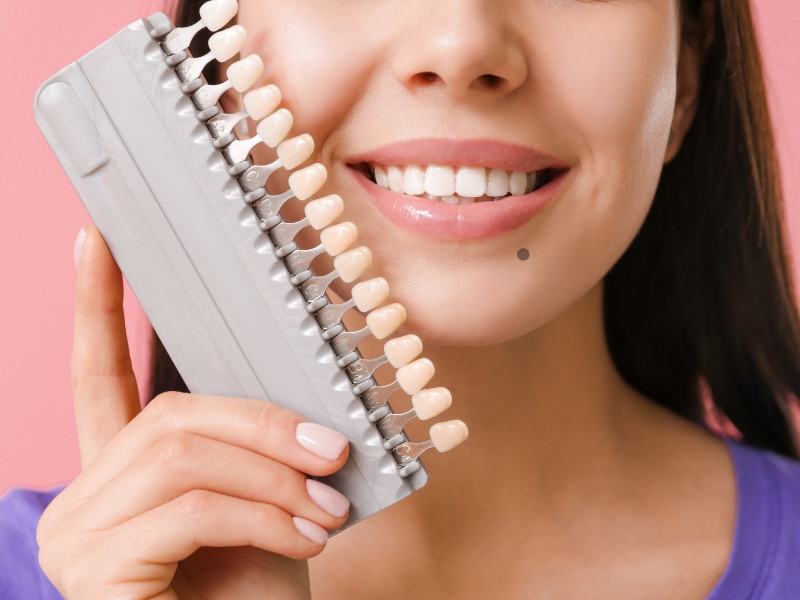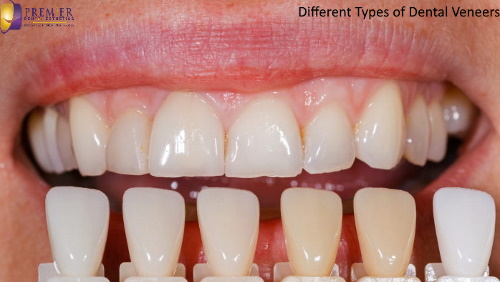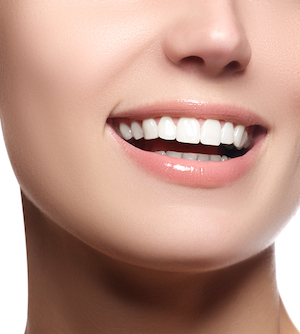
Dental veneers are thin shells placed over teeth to enhance their appearance. They can fix issues like discoloration, chips, and gaps, providing a beautiful smile. Understanding the materials used in the application process is crucial for patients considering veneers.
The adhesive used to bond veneers to teeth is vital in durability and aesthetic results. Knowing the types of adhesives can help patients make informed decisions about their dental care.
What Are Veneers?
Dental veneers are custom-made shells that cover the front surface of teeth. They are designed to improve the appearance of one’s smile. There are two main types of veneers: porcelain and composite.
Porcelain veneers are thin layers made from ceramic material. They offer a natural look and resist staining. Dentists often prefer them for their durability and ability to mimic natural tooth enamel.
Composite veneers are made from resin materials. They are generally less expensive and can be applied in a single visit. However, they may not last as long as porcelain options.
Veneers are commonly used in cosmetic dentistry to address various aesthetic concerns. They can effectively improve teeth’ shape, size, and color, making them a popular choice for individuals seeking a smile makeover.
The Adhesive Process
The application of veneers involves a detailed process that ensures proper adhesion and lasting results. First, the dentist removes a small amount of enamel to prepare the tooth surface. This step is crucial to creating space for the veneer and improving bonding. After preparation, the dentist takes impressions of the teeth to create custom veneers.
Once the veneers are ready, the dentist uses dental adhesive to bond them to the tooth surface. The adhesive is carefully applied to ensure an even layer, which helps achieve a strong bond.
The adhesive’s role is vital. It secures the veneer in place and influences the overall aesthetics. A good adhesive ensures that light passes through the veneer in a way that mimics natural teeth. It should also withstand everyday wear and tear, ensuring the veneers remain intact for many years.
The curing process follows the application. Many adhesives require a curing light to harden, which enhances their strength. This step is essential for achieving a successful veneer application, as it ensures the adhesive bonds effectively to the tooth and the veneer.
Types of Adhesives Used for Veneers
Dental Adhesives:
Dentists primarily use resin-based adhesives for bonding veneers. These adhesives are designed specifically for dental applications. They create a strong bond between the veneer and the tooth. Resin-based adhesives are known for their excellent strength, providing reliable veneer support over time.
One important characteristic of these adhesives is their curing time. Some adhesives cure quickly, allowing for faster procedures. Others may take longer, providing more working time for the dentist. Choosing the right adhesive is crucial for achieving optimal results.
Bonding Agents:
Bonding agents also play a significant role in veneer applications. These agents help to enhance the bond between the tooth surface and the veneer. They create a chemical and mechanical bond, ensuring the veneer stays secure.
Various types of bonding agents are used in the industry. Some are light-cured, meaning they harden when exposed to a specific light. Others may be self-adhesive, providing ease of use. The choice of bonding agent depends on the specific clinical situation and the materials involved.
Why the Choice of Glue Matters?
Selecting the right adhesive for dental veneers is essential for several reasons. Material compatibility is a key factor. Not all adhesives work well with every type of veneer material. For instance, the adhesive used for porcelain veneers may differ from that used for composite veneers.
The clinical situation also influences adhesive choice. Factors such as the patient’s oral health, the condition of the teeth, and the desired outcome all play a role. A strong adhesive is crucial for ensuring the longevity of the veneers. If the adhesive fails, the veneers may come loose, leading to additional dental issues.
The impact of adhesive choice extends beyond durability. A high-quality adhesive contributes to patient satisfaction. When veneers bond securely, they provide a natural appearance and function properly. Patients can enjoy their new smiles without worrying about their veneers coming off. Thus, choosing the right glue can significantly enhance dental veneers’ appearance and longevity.
How Dentists Select the Right Adhesive?
Dentists consider several factors when selecting the right adhesive for veneers. One important factor is the type of veneer material. Different materials require different adhesives to ensure a strong bond.
Dentists also evaluate the specific clinical situation. For example, they might assess the condition of the tooth and the patient’s oral hygiene habits. A healthy tooth structure can better support the adhesive and the veneer.
The latest research plays a crucial role in adhesive selection. Innovations in dental adhesives lead to improved bonding properties. New formulations provide better strength, faster curing times, and enhanced aesthetics. Dentists stay updated with the latest studies to ensure they use the best materials for their patients.
Additionally, dental professionals often rely on manufacturers’ guidelines. These guidelines provide insights into the compatibility of adhesives with different veneer materials, helping dentists make informed decisions for successful veneer applications.
Common Myths About Dental Adhesives
Many misconceptions exist regarding dental adhesives and veneers. One common myth is that all adhesives are the same. In reality, adhesives vary greatly in strength and compatibility. Choosing the right adhesive is crucial for achieving long-lasting results.
Another myth suggests that dental adhesives are unsafe or harmful. However, dental adhesives undergo rigorous testing for safety and effectiveness and are specifically designed for use in dentistry, ensuring their safety for patients.
Some people worry that veneers will fall off easily due to the adhesive. While improper application may lead to issues, proficient dentists use reliable adhesives to ensure a strong bond. Patients can enjoy their veneers without fear of them coming loose.
Understanding these myths helps patients make informed decisions about their dental care. Consulting with a qualified dentist can clarify any concerns regarding dental adhesives.
Aftercare and Maintenance
Proper aftercare is essential for maintaining the appearance and longevity of veneers. Patients should avoid hard foods and excessive pressure on their teeth, which can damage veneers. Chewing ice or hard candies can lead to chipping or loosening.
Maintaining good oral hygiene is vital. Regular brushing and flossing help keep the underlying teeth healthy. Patients should use non-abrasive toothpaste to avoid scratching the surface of their veneers.
Regular dental check-ups are also crucial for ensuring the integrity of veneers. During these visits, dentists can monitor the condition of the veneers and the surrounding teeth. They can address any issues early, preventing more significant problems.
In summary, understanding the adhesives used for veneers is essential for anyone considering this cosmetic dental option. The choice of glue significantly affects the durability and appearance of veneers. Patients should consult their dentists for personalized advice on veneers and the best adhesive options. By staying informed, patients can ensure they achieve the beautiful smile they desire.




